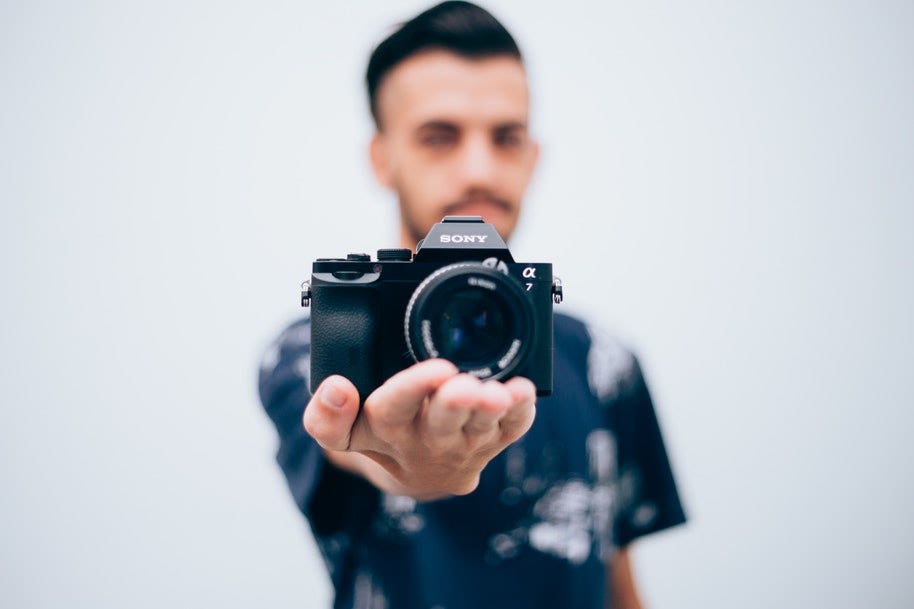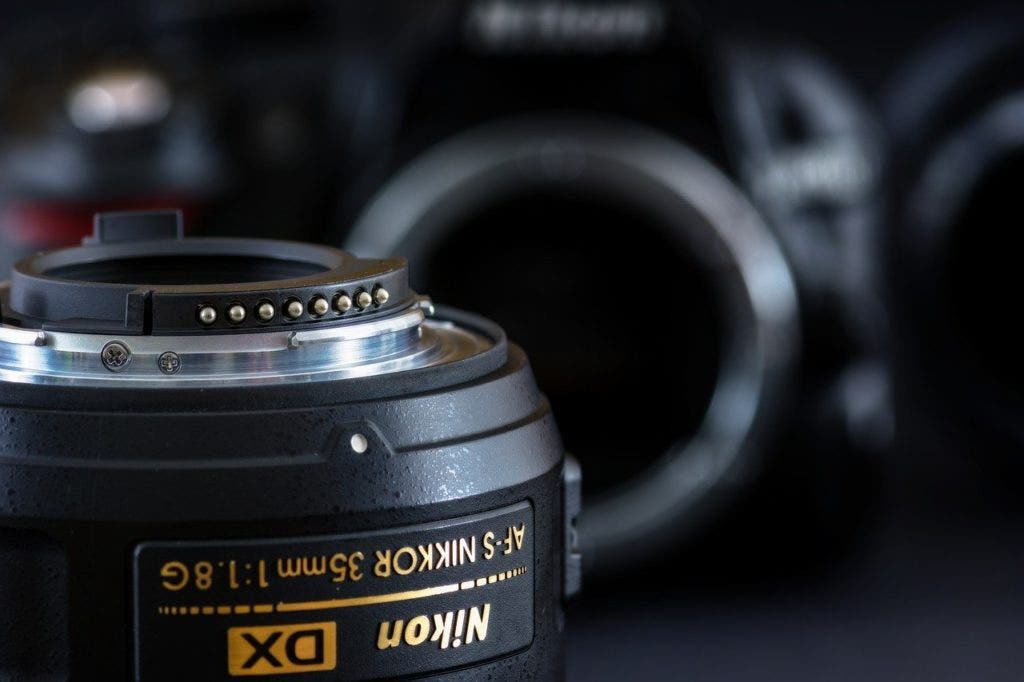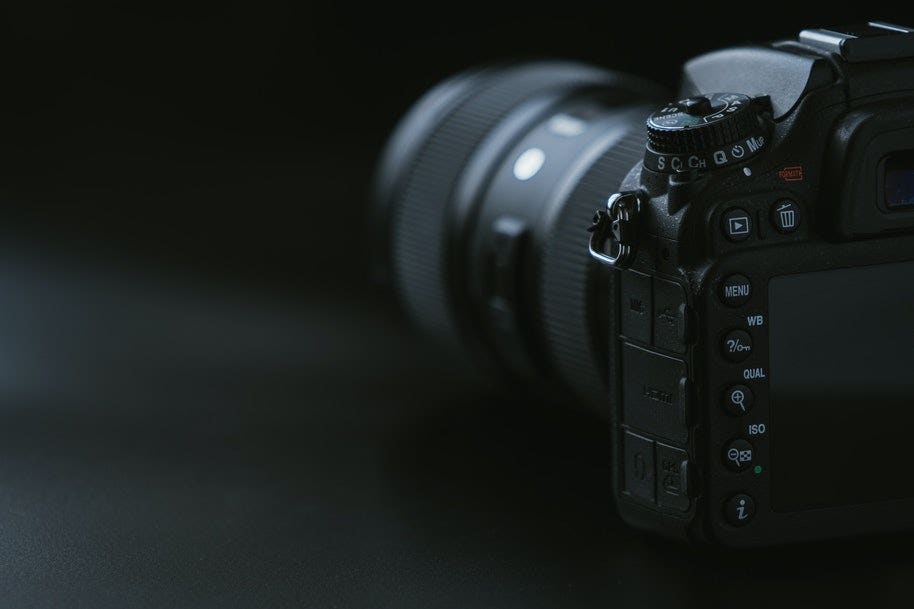
Mirrorless cameras entered the market in 2008 as a more compact alternative to the bulkier DSLR. They initially served as a bridging model between DSLR cameras and compact cameras - although their capabilities have since grown to rival even the best DSLRs.
But if they’re more compact than DSLRs, where does that leave the point-and-shoot camera, distinguishable for its pocketability?
Mirrorless digital camera vs point and shoot camera: What’s the difference?
A compact camera is a simple point-and-shoot camera known for its simplicity. With situational shooting modes and fixed, built-in lenses, they’re incredibly compact, able to slide into a jeans or jacket pocket without adding much bulk.
A mirrorless camera, also called a compact system camera, is closer in functionality to a DSLR camera. It is designed with an interchangeable lens system that means you can change lenses at will.

Compact cameras are popular among novice photographers who simply want an alternative device and superior quality to their smartphone camera.
Mirrorless cameras are better for intermediate or professional photographers who want their cameras to have room to grow along with their skills.
But what are the main differences between mirrorless digital cameras and point-and-shoot cameras?
Versatility
Arguably the biggest difference between a mirrorless camera and a point-and-shoot camera is found in the lenses.
Mirrorless cameras have interchangeable lenses, which means you can swap out the lens according to the style of photography you want to pursue on any given day.

On the other hand, compact cameras have built-in lenses that you can’t change. These lenses in themselves can be powerful and versatile, with optical zoom capabilities up to 85x.
But it’s not the same as having a telephoto lens dedicated to wildlife photography or a wide-angle lens for street photography.
Most camera brands now have a huge range of lenses for their mirrorless models, giving you plenty of choice.
Affordability
It’s tricky to compare the costs of a mirrorless with that of a compact camera since prices vary dramatically even within models, depending on the quality of the camera and its features.
At the high end of the spectrum, both mirrorless and point-and-shoot cameras can reach several thousands of dollars.
But there’s a noticeable difference in the most affordable mirrorless cameras vs point-and-shoots. The cheapest compact cameras come in under $100 while you’d struggle to find a mirrorless camera for under $700.
Even putting aside the cost of the camera itself, mirrorless camera costs can add up as you build out your lens range and additional equipment.
Size and weight
Though mirrorless cameras were designed as a more compact alternative to DSLR cameras, they’re still generally larger and bulkier than point-and-shoot cameras.
Mirrorless models delicately balance power and quality with portability. But it’s often the case that the bulkier and heavier the mirrorless camera, the better the image quality will be.
This is because the majority of the weight of a camera comes from the type of sensor and motorised mechanisms the camera uses. The sensor is the part of the camera’s hardware the captures light and converts it into an image - the film equivalent of a digital camera.
For example, Micro Four Thirds sensors and those commonly found in compact cameras are smaller and more lightweight than, say, a full-frame sensor.

Of course, it isn’t just the sensor that adds bulk. With their lenses attached, mirrorless cameras form an awkward L shape that isn’t easy to fit into your handbag. The camera inevitably takes up more space - especially if you want to carry an additional lens or other accessories.
Meanwhile, a compact camera is often pocketable and lightweight. It’s not just that the sensor is generally smaller. Compact cameras also have retractable lenses that, when powered down, often leave a smooth, undetectable finish to the front of the camera.
This means they can often fit in your jeans or shirt pocket without any hassle, just like the smartphone they’re replacing.
Ease of use
Compact cameras are by and large still designed for those looking for simplicity - the simple ‘point-and-shoot’ functionality that gives the compact camera its name.
Most compact cameras are designed with simplicity as their central feature. Their menus are typically small and intuitive. There are plenty of automatic and pre-programmed modes, allowing you to enjoy maximum creativity with minimal effort.
But many models also facilitate manual shooting with aperture and shutter speed settings for those wanting to up their game.

There’s generally a steeper learning curve for those investing in a mirrorless camera, especially if you want to make the most of the manual settings.
Sure, you can set your mirrorless camera to Auto mode for effortless captures. But that defeats the purpose of having a mirrorless.
Mirrorless cameras offer total control, giving you the ability to adjust your aperture, shutter speed, light sensitivity, and more. But this requires more skill, making a mirrorless camera only really worth it for more serious photographers.
Image quality
One of the biggest differences between mirrorless cameras and point-and-shoot cameras is their sensors. This has a huge impact on image quality because the larger the sensor, the more light you can capture.
Mirrorless cameras usually have much larger sensors than compact cameras, which means they typically produce consistently high-quality images.
The most common sensors in mirrorless cameras are the Micro Four Thirds sensors (mostly found in Panasonic and Olympus compact system cameras) and the APS-C format, found in everything else.
However there’s also a growing range of mirrorless cameras with full-frame sensors - the highest quality sensor you can get and the one desired by most professional photographers.
Because of their more compact design, point-and-shoot cameras tend to have much smaller sensors than mirrorless cameras. And smaller sensors usually translate into poorer image quality, especially in low-light scenarios.

But this is slowly changing - and the line between the two camera types is blurring.
To make point-and-shoot cameras more relevant in a world of improving smartphone technology, many newer compact camera models have a 1”-type sensor similar to what’s found in mirrorless cameras like the Panasonic LX10.
There are even full-frame compact cameras, such as the Sony RX1R Mark II, which has a price tag to match the very best DSLR cameras.
Mirrorless vs compact camera: which is best for you?
There’s a place in the world for both compact cameras and mirrorless cameras.
If you’re looking to upgrade your photos from your smartphone camera to something with a little more grunt but without compromising on portability, a point-and-shoot camera may be the perfect choice for you.
If you know you’re going to be improving your camera skills and broadening your style of photography, and you'll need more versatility, you should look at mirrorless cameras.
Whatever model you choose, we have a huge selection of cameras at Camera House. Shop online today or visit us in-store to check out our complete range.
